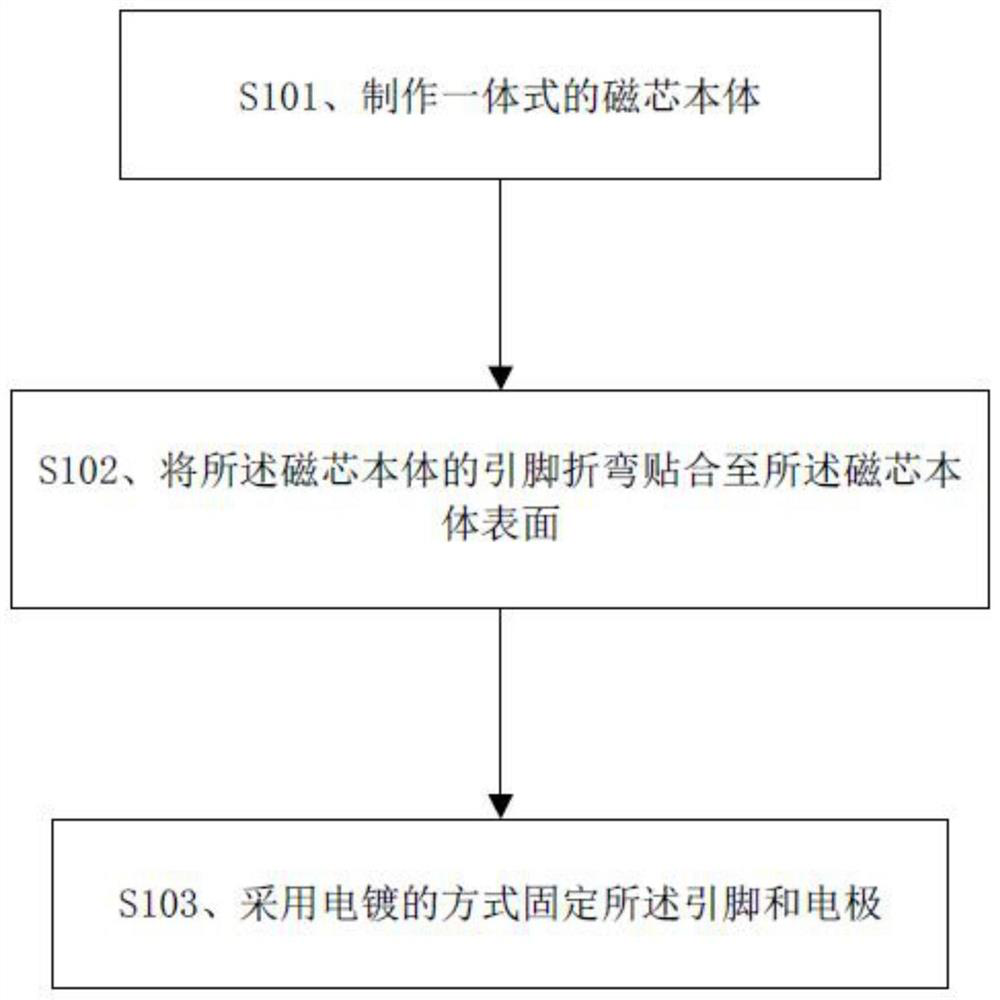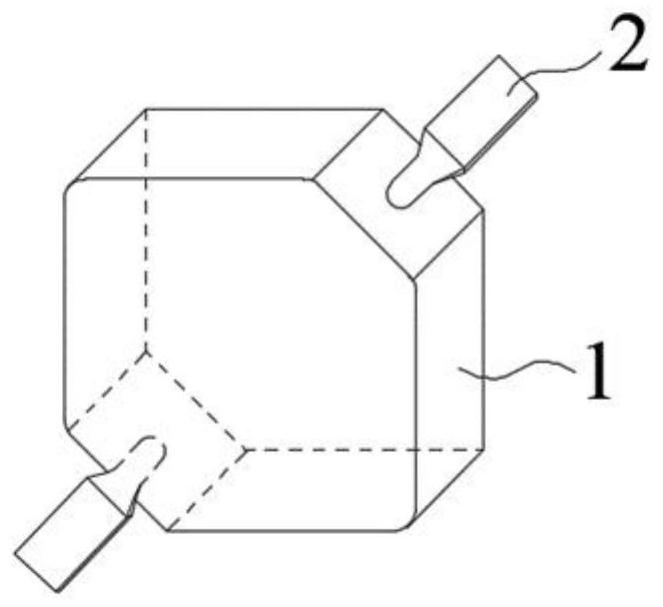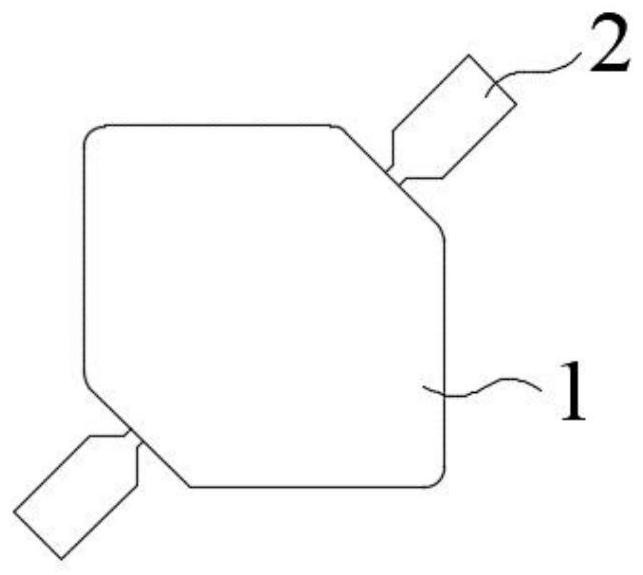Inductor manufacturing method and inductor
A manufacturing method and inductor technology, which is applied in the direction of inductor/transformer/magnet manufacturing, transformer/inductor coil/winding/connection, circuit, etc., which can solve the problems of large inductor DCR, easy to be affected by external environment, and high risk of circuit breaker
- Summary
- Abstract
- Description
- Claims
- Application Information
AI Technical Summary
Problems solved by technology
Method used
Image
Examples
Embodiment 1
[0044] The existing method for manufacturing the winding of an integrally formed inductor usually uses spot welding to connect the three electrodes. One method is to place the spot-welded wire group and the three electrodes in the mold cavity, and then place them in the mold cavity. Fill the metal magnetic powder into the die-casting molding, and finally become a finished product. Another way is to put the winding into the mold cavity, fill the metal magnetic powder into the mold cavity, and then extend the pin 2 of the winding out of the magnetic core. Body 1, and welded with 3 electrodes. However, if spot welding is used to connect pin 2 and electrode 3, due to the small solder joints, both of the above two methods will lead to a large contact resistance between the winding and the electrode 3, which will lead to the DC resistance of the finished inductor (DCR, Directive Current Resistance) is relatively large, which brings large conduction loss, and because the shock resist...
Embodiment 2
[0068] This embodiment provides a method for manufacturing an inductor. The difference between the method for manufacturing an inductor and the method for manufacturing an inductor in Embodiment 1 is that:
[0069] Step S101 in this embodiment includes:
[0070] S1011. Winding wire group: wind the coil according to a certain wire diameter and number of turns to form a wire group that meets the requirements of inner and outer diameter and height, and remove the insulating layer at both ends of the wire group, and use it as pin 2 of the wire group;
[0071] S1012, welding the pin 2 and the electrode 3, then placing the wire group in the mold cavity, and leading the pin 2 to the outside of the mold cavity;
[0072] S1013, filling the mold cavity with magnetic material, and press molding to obtain the magnetic core body 1 .
[0073] Step S102 includes: bending and bonding the welded pins 2 and electrodes 3 to the surface of the magnetic core body 1 .
[0074] Such as Figure 5 ...
PUM
 Login to View More
Login to View More Abstract
Description
Claims
Application Information
 Login to View More
Login to View More - R&D
- Intellectual Property
- Life Sciences
- Materials
- Tech Scout
- Unparalleled Data Quality
- Higher Quality Content
- 60% Fewer Hallucinations
Browse by: Latest US Patents, China's latest patents, Technical Efficacy Thesaurus, Application Domain, Technology Topic, Popular Technical Reports.
© 2025 PatSnap. All rights reserved.Legal|Privacy policy|Modern Slavery Act Transparency Statement|Sitemap|About US| Contact US: help@patsnap.com



